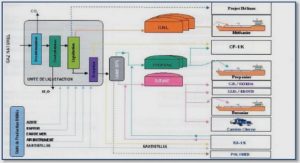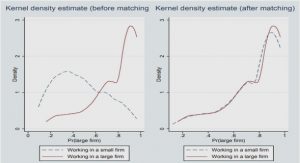Get Complete Project Material File(s) Now! »
Duration of exposure and previous exposure
MDR-TB patients with previous exposure to Streptomycin could be prone to hearing loss. Repeated exposure to aminoglycosides leads to an additive damage to hair cells and other structures, and subsequently to deafness (Rybak & Ramkumar 2007:933). It appears that the aminoglycosides persist in the inner ear tissues for 6 months or longer after administration, and is the main cause for enhanced susceptibility of patients to the ototoxicity of aminoglycosides when they have a history of previous aminoglycoside treatment. The susceptibility does not seem to arise from drug accumulation within the inner ear, given that the inner ear concentration of aminoglycosides does not exceed that of the plasma.
Concurrent exposure to ototoxic drugs
Prescription of ototoxic drugs concomitantly, especially loop diuretics, platinum-based antineoplastic drugs, salicylates and NSAID, anti-malarial drugs (especially Quinine), HIV protease inhibitors and NRTI may be associated with increased MDR-TB treatment hearing impairment. Antineoplastic agents most commonly associated with ototoxicity are the platinum-based compounds cisplatin and, to a lesser degree, carboplatin (Xia, Chen, Su, Yin & Wang 2014:376-85). These agents are widely used in gynaecologic, lung, central nervous system, head and neck, and testicular cancers (Yasui, Adachi, Kato, Koh, Asanuma, Sakata & Hanada 2014:1).
Platinum compounds damage the stria vascularis in the scala media and cause outer hair cell death beginning at the basal turn of the cochlea (Xia et al 2014). The mechanism of platinum ototoxicity is mediated by free-radical production and the free radicals generated by this mechanism then lead to mitochondria-mediated and caspase-mediated apoptotic cell death, and ultimately permanent hearing loss. The following risk factors have been identified for development and potentiation of platinum-induced ototoxicity: (1) high dose and increasing number of cycles, (2) concurrent or past cranial irradiation, (3) age extremes, (4) dehydration, (5) co-administration of other ototoxic agents, and (6) renal failure (Langer, am Zehnhoff-Dinnesen, Radtke, Meitert & Zolk 2013:558-69; Mudd 2012).
Loop diuretics are a class of medications used to treat congestive heart failure, renal failure, cirrhosis, and hypertension. These include several different chemical groups, including sulfonamides, phenoxyacetic acid derivatives, and heterocyclic compounds. The most effective and frequently used diuretics; ethacrynic acid, furosemide, bumetanide can cause ototoxicity (Vilayur, Gopinath, Harris, Burlutsky, McMahon & Mitchell 2010:661-9). The ototoxic effects of loop diuretics seem to be associated with the stria vascularis, which is affected by changes in the ionic gradients between the perilymph and endolymph (Xia et al 2014:376-85). These changes cause oedema of the epithelium of the stria vascularis. Overall, ototoxicity attributed to this group of medications is usually self-limited and reversible in adult patients, although irreversible hearing loss has been reported in neonates.
Ototoxicity is estimated to occur in 6-7 % of patients taking loop diuretics. Occurrence of loop diuretic ototoxicity depends on several factors, including dose, infusion rate, history of renal failure, and co-administration of other ototoxic agents like those used in treatment of MDR-TB (Sinxadi 2009:372-73). Potentiation and synergism of ototoxic effects of aminoglycosides and loop diuretics is well documented, and co-prescription of these drugs is not recommended (Hirose & Sato 2011:108-18; Xiong, Chu, Huang, Cui, Zhou ,Chen, Li, Wang, Chen & Li 2010:222-8). If used, the lowest doses of loop diuretics is possible to achieve desired effects, avoiding rapid infusion rates and use in renal failure.
The patient related risk factors
From the literature reviewed, patient characteristics include age, sex, ethnicity, coexisting disorders, and genetic or geographic factors.
Age above 60 years
Gatell, Ferran, Araujo, Bonet, Soriano, Traserra, and SanMiguel (1987:1387) studied records of 187 patients enrolled in three prospective randomised trials. The patients who developed auditory toxicity were significantly older (P = 0.01) and only age was retained as independently influencing the development of auditory toxicity on logistic regression. It appears that damage is more significant in the elderly who may have fewer hair cells at the beginning of treatment or lower endogenous protective mechanisms than other individuals with compromised auditory function (Rybak 2007:364-9; Rybak & Whitworth 2005:1313-21); Rybak & Ramkumar 2007:933). On the converse, de Jager and Alterna (2002:622-7) did not find that factors such as sex or age were associated with hearing loss in a prospective study. These findings are also corroborated in Moore, Smith and Lietman (1984:30) who analyzed risk factors for the development of auditory toxicity in patients receiving aminoglycosides from patients enrolled in three prospective randomised double-blind clinical trials of Gentamicin, Tobramycin and Amikacin, found that age and sex did not increase risk for hearing loss among the patients.
CHAPTER 1
1.1. INTRODUCTION
1.2 BACKGROUND INFORMATION ABOUT THE RESEARCH PROBLEM
1.3 THE RESEARCH PROBLEM
1.4 AIM OF THE STUDY
1.5 SIGNIFICANCE OF THE STUDY
1.6 DEFINITION OF TERMS
1.7 THEORETICAL FOUNDATIONS OF THE STUDY
1.8 RESEARCH DESIGN AND METHODS
1.9 THE SCOPE OF THE STUDY
1.10 STRUCTURE OF THE THESIS
1.11 CONCLUSION
CHAPTER 2
2.1 INTRODUCTION
2.2 THE EAR, SOUND AND HEARING IMPAIRMENT.
2.3 IMPACT OF HEARING LOSS
2.4 DRUG RESISTANT TUBERCULOSIS
2.5 AMINOGLYCOSIDE RELATED HEARING LOSS AND OTOTOXICITY
2.6 STUDIES ON INCIDENCE AND RISK FACTORS FOR MONITORING MULTI DRUG RESISTANT TB RELATED HEARING LOSS
2.7 PREVENTION, TREATMENT AND MANAGEMENT OF HEARING LOSS .
2.8 APPLICATION OF THE NEUMAN SYSTEMS MODEL FOR HEARING PRESERVATION IN PATIENTS ON MDR-TB TREATMENT
2.9 CONCEPTUAL FRAMEWORK .
2.10 REFLECTIONS FROM THE LITERATURE
2.11 CONCLUSION .
3.1 INTRODUCTION
3.2 RESEARCH DESIGN .
3.3 RESEARCH METHOD
Summary of the results of the pilot
3.4 INTERNAL AND EXTERNAL VALIDITY OF THE STUDY
3.5 SUMMARY OF THE RESEARCH DESIGN AND METHODS .
3.6 CONCLUSION .
CHAPTER 4 ANALYSIS AND PRESENTATION OF RESULTS
4.1 INTRODUCTION
4.2 DATA MANAGEMENT AND ANALYSIS
4.3 RESEARCH RESULTS
4.5 SURVIVAL DISTRIBUTION AND TIME TO HEARING LOSS .
CHAPTER 5 0
DISCUSSION OF RESULTS .
CHAPTER 6
DEVELOPMENT OF BEST PRACTICE GUIDELINES TO MONITOR AND PREVENT HEARING LOSS RELATED TO DRUG RESITANT TUBERCULOSIS TREATMENT
GET THE COMPLETE PROJECT
BEST PRACTICE GUIDELINES TO MONITOR AND PREVENT HEARING LOSS RELATED TO DRUG RESISTANT TUBERCULOSIS TREATMENT






